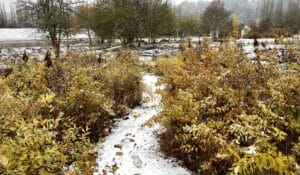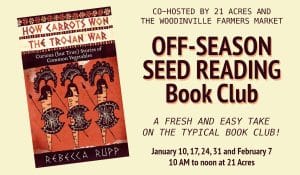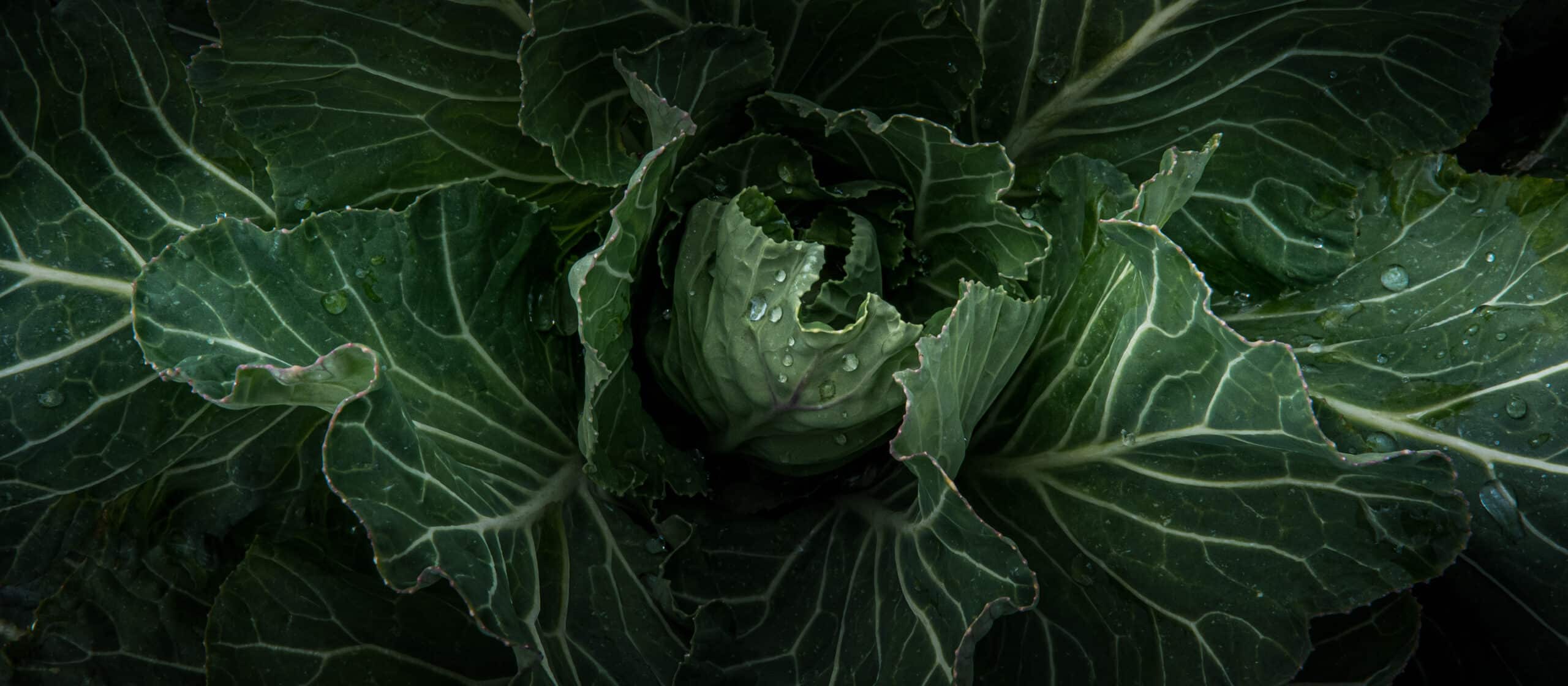
Eradicating Reed Canary: Restoration Experiments on the Farm
Eradicating Reed Canary: Restoration Experiments on the Farm
- posted on: October 28, 2020
- posted by: Rebecca Jordan
"*" indicates required fields

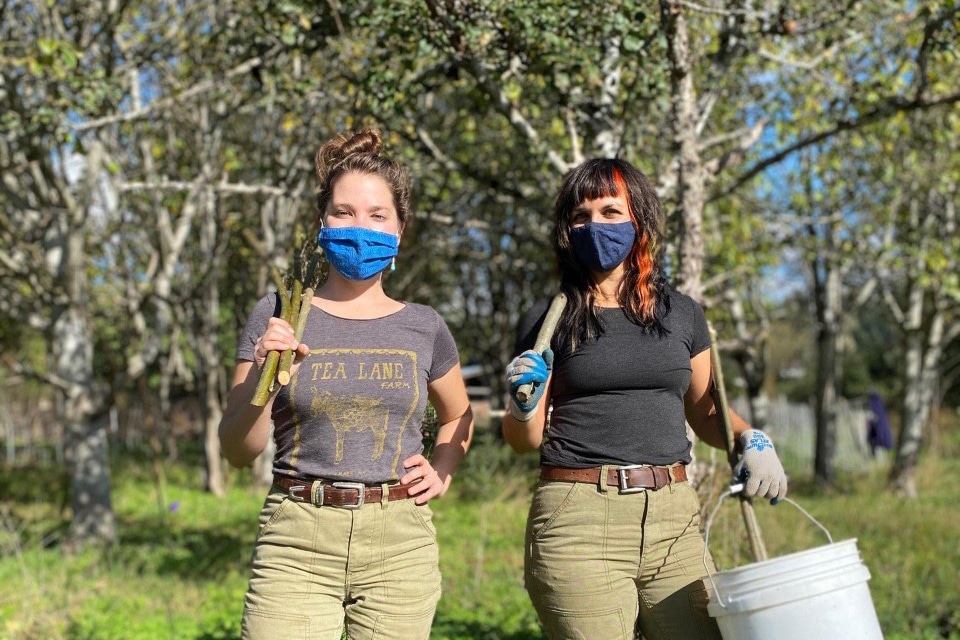
This post was written by Jess Chandler and Emily Palena.
As things cool off in the production fields, the farm is bustling with ecological restoration projects. At the top of the list this season is experimenting with multiple restoration methods to mitigate the slow but steady creep of reed canary grass, an invasive species on the farm.
Restoration is the process of assisting the recovery of ecosystems that have been damaged, degraded, or destroyed. This process is challenging, labor intensive, and essential for the integrity of our farm and climate.
Restoration work often creates layered benefits; planting diverse plant communities will invite animal communities. This web of life supports crucial systems like pollination and decomposition. These benefits to humans—and particularly to farms—are called ecosystem services. Ecosystem services help support farming by re-introducing natural processes that reduce pressure from invasive species (weeds), cool the warming atmosphere, manage water flow, and so much more.
Because each piece of land has a unique ecosystem, that means each requires a unique approach to restoration. This land is a historic wetland. Though stewarded historically by the Coast Salish and Duwamish Peoples, settlers logged and cleared this land, turned it into farmland, and straightened the river—which had catastrophic effects on this ecosystem. On our farm, the ecological solutions we focus on are restoring wetland space by creating healthy hydrologies and controlling invasive species.
Restoring this wetland ecosystem will in turn create ecosystem services that help farming while actively storing water and carbon and creating habitat. Restoration is about the long game, and there is no one right way to do things. So, here on the 21 Acres campus, we approach our projects with curiosity, trying to improve our process each season.
Eradicating reed canary grass is an example of our experimental process of solving ecological problems. Approximately five acres of our farm are in active restoration, and across even more than that, reed canary grass (our invasive plant archnemesis) reigns supreme. Originally introduced in the 1800s to control erosion, reed canary grass grows so densely in wet soils it disrupts water flow, changes soil composition, and outcompetes native species to the point of it threatening farm fields and our food systems.
As part of our agroecological approach to farming, our Restoration Specialist, Jess Chandler, has spearheaded mitigation strategies to eradicate the reed canary grass. In one particular patch, at the southern side of the farm just beyond the goat paddock, we have tried a few different methods.
Mowing
To reduce the weed seed bank—or the amount of seeds in the soil from previous season. Jess mowed down the grass before seed heads formed. Mowing the invasive grass species alone would never fully control the problem.
Solarization
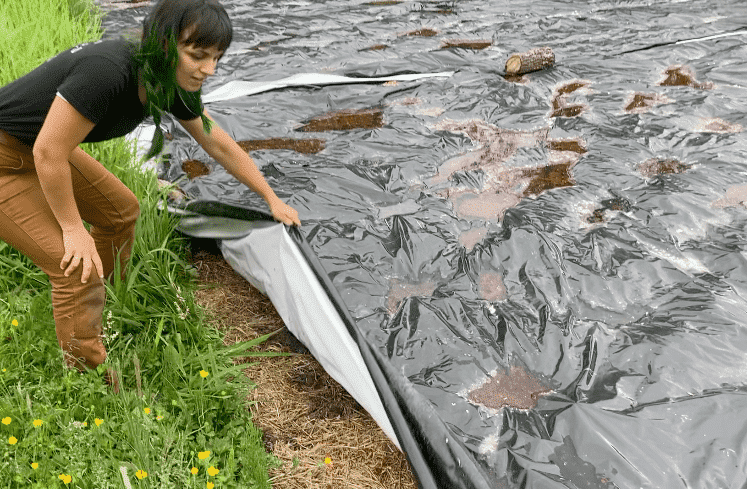
In several patches, we are using a large silage tarp to smother the grass. This method is called solarization, something we regularly implement in our agricultural practices. This spring was our first experiment using solarization to control reed canary grass. So far it seems to be working well. We’ll be sure to share updates so you can see what it looks like in 2022!
Animal husbandry
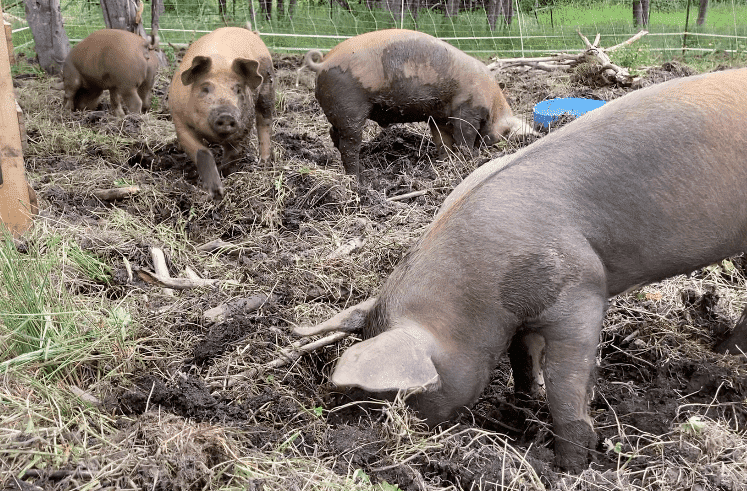
Animal husbandry is one of the many tools that farmers and ecologists use to bolster healthy ecosystems. This season with the help of an incredible student project led by Masra Clamoungou, pigs were rotationally grazed across the reed canary grass zone. The pigs disrupt and eat the grass, dense root systems, and rhizomes.
Live Staking
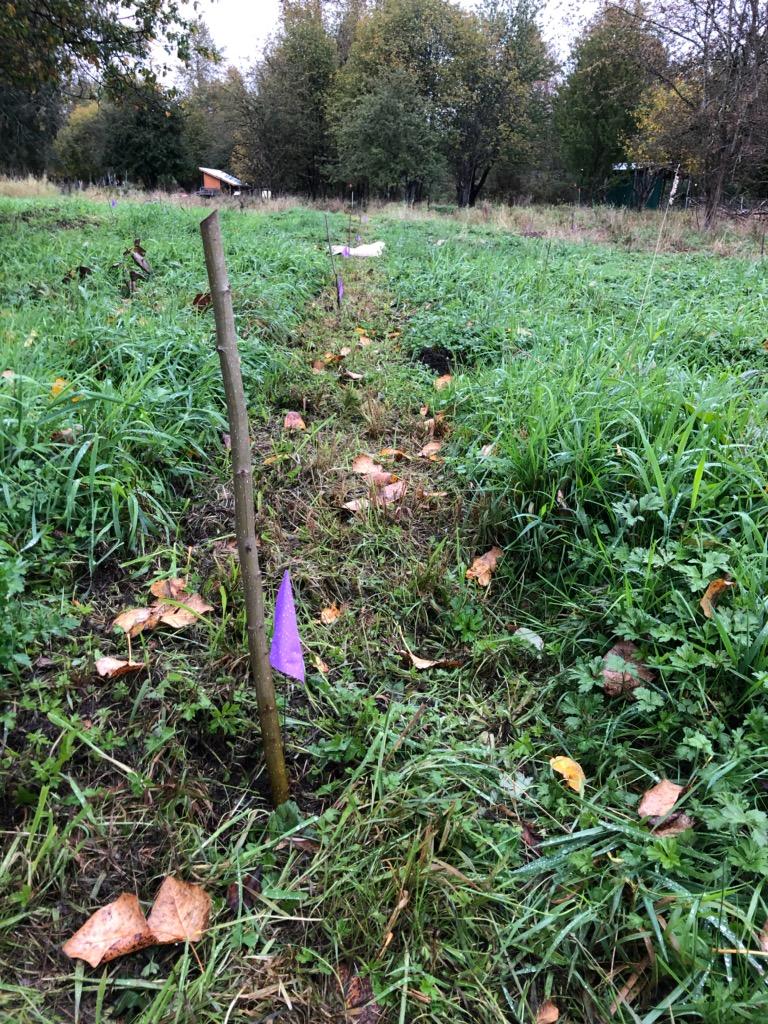
In the most recent experiment, Jess led staff in live staking willows in the field of reed canary grass. Live staking includes taking tree cuttings from healthy plants in order to increase the native species population. Read more about live staking from King County.
During this work party on the farm, we planted live stakes of 3 species of native willow trees every 15 feet. Hardy willow trees grow incredibly quickly and will shade out the sun-loving reed canary grass. Our hope is in a few years, this patch of reed canary grass will be a thriving wetland with native species on all trophic levels.
Restoration work not only aids our farm in creating ecosystem services, but it also is an important tool in mitigating the extinction crisis, carbon sequestration, and conserving natural resources. Restoration is vital climate action.
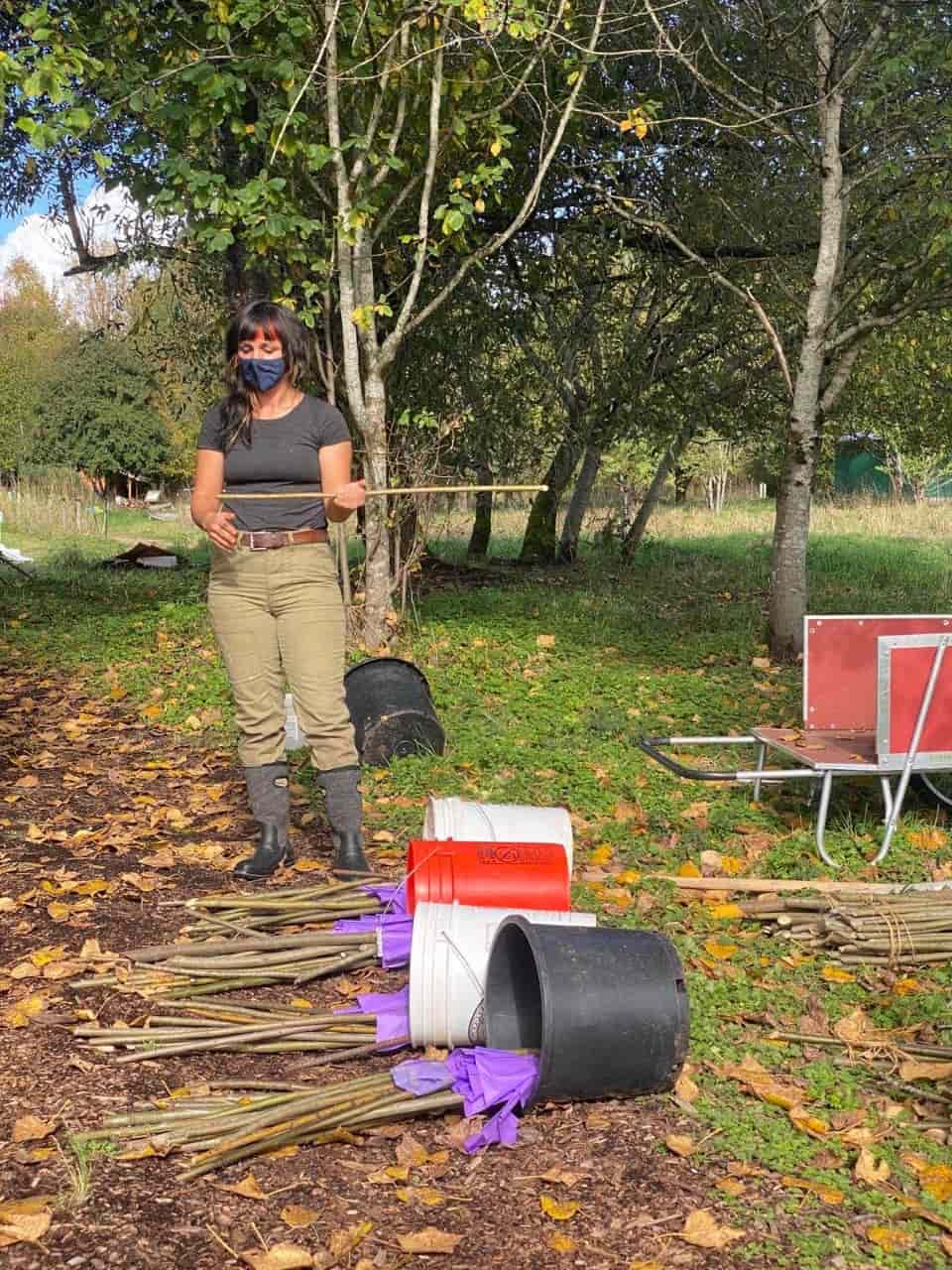
About Jess Chandler
Jess is the Landscape and Restoration Specialist here on the 21 Acres campus. Jess works to improve the health of ecological systems on campus and find harmony between the built environment, farmland and the greater landscape. You might see Jess using her green thumbs to plant, remove invasives, propagate, and lead volunteer groups. Jess is a UW graduate of Landscape Architecture and has worked in horticulture for ten years.
About Emily Palena
Emily is the 21 Acres Education Lead. Hailing from New Mexico and Boston, Emily is now in love with the salt and soil of the Puget Sound. As an educator, Emily looks for the movement, joy, and connection in every lesson and strives for sustained inclusion and inquiry. As a farmer, she loves coming home with dirt on her face and the satisfaction of watching things grow. Emily holds a M.Ed. in Curriculum and Instruction from the University of Washington and a certificate from Islandwood’s graduate residency program.










 back to blog overview
back to blog overview


